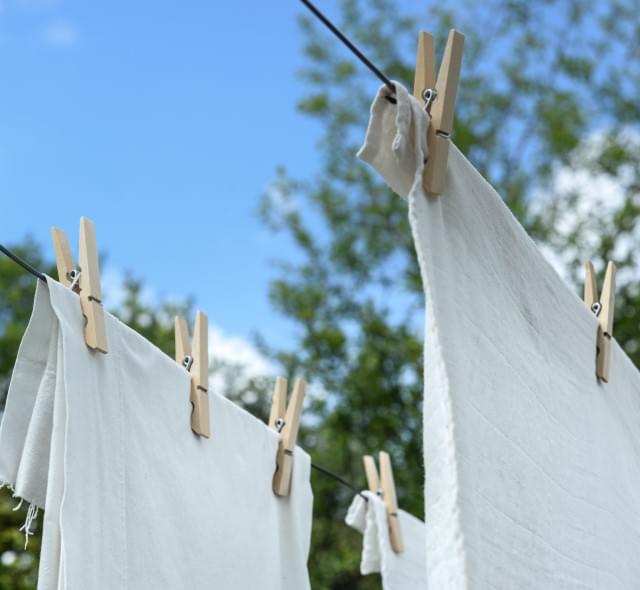- UNIFORM BY SCHOOL
- Girls School Uniform
- Boys School Uniform
- Skirts
- Boys Trousers
- Girls Trousers
- Polo Shirts
- Blouses
- Shirts
- Blazers
- PE Kit
- Clearance


Girls School Uniform


Boys School Uniform


FREE delivery - Ends Monday at Midnight
(X)







As children begin to return to school, it’s natural to have worries about their health and wellbeing. Wanting to do as much as possible to ensure they don’t pick up or transmit bacteria and viruses is sensible, and that includes taking care of their school uniform.
The current government guidelines state that Covid 19 can survive on clothing for a couple of days, although the likelihood is that it will be much shorter than that (compared to hard surfaces where it survives for 72 hours). Washing your child’s school uniform regularly can help reduce the risk of passing the virus on – but washing in the wrong way can result in school uniform which is damaged, discoloured or shrunk.
The best advice, and that which follows the government guidelines, is to wash your child’s school uniform according to the care label. Every school uniform garment will have a care label attached with symbols explaining how to wash the clothing in the best way possible to ensure it stays smart and clean, so following this is crucial.
The majority of school uniform can be safely washed at 40°C, which will remove stains and help get rid of germs without damaging the uniform. Washing at 30°C helps preserve bright colours and reduce likelihood of shrinkage, as well as reducing energy usage by nearly 40%. If you’re worried about this temperate being ineffective at removing germs, switch to a liquid detergent which will penetrate the fibres of the clothing and clean it more easily.
While the temptation might be to throw the kids’ uniform into the washer at a very hot temperature – like 60°C or 90°C – in the hopes this will kill any germs that might be present, it’s the combination of temperature, laundry detergent and pre-wash treatment which actually kills germs & viruses. By washing on a lower temperature and using a good quality detergent, you can save energy while also keeping school uniforms clean and fresh.
The washing processes that cause damage to clothing include washing at too hot a temperature, tumble drying at too hot a temperature or using astringents and chemical agents which negatively affect school uniform garments.
Do not use bleach, disinfectant products and other harsh chemicals as they can all damage school uniforms irreparably. Dark school trousers or coloured school sweatshirts will change colour if bleach is used – creating white or orange spots – and strong chemicals will ‘eat away’ at the fibres of the clothing and weaken it. The residue from these chemicals will also hang around on the clothing, transferring to your child’s skin, and be washed into waterways after the washing machine has emptied.
If you want to get rid of a specific stain, use a pre-wash stain remover to treat the clothing before it goes in the wash.
A hot or very hot wash (at 50°C upwards) can cause school uniform garments to shrink, particularly if they are made of natural fibres like cotton which need to be treated more gently. Durable synthetic fibres, such as polyester, are more able to withstand heat and won’t shrink as easily. Hot tumble drying can also damage clothing, breaking down fibres through the repeated ‘tumbling’ and fading colours in the same way as if they’d been exposed to intense sunlight.
Line drying or air-drying clothes is the best way to keep school uniforms looking smart and smelling fresh. If possible, line dry the uniforms outside; on a fine day, the sun will help keep school shirts, polo shirts and other white garments looking bright and sparkling white. Avoid placing coloured items like sweatshirts in direct sunlight as it can fade the colours slightly. Air drying clothes inside is the next best thing; use a clothes horse and save yourself ironing by hanging shirts and polo shirts on hangers to dry, and laying jumpers or cardigans flat to prevent sagging.
If time is of the essence a tumble drier can help, but be sure to follow the care label and choose the correct temperature. This way you’ll help the clothes last as long as possible and save energy.
Regular, routine cleaning is advised to help keep specific viruses at bay, rather than extreme disinfecting measures.
An important thing to do is teach your children to wash their hands for 20 seconds before and after they eat, play outside, come home from school or spend time with friends. Germs are most likely to live for extended periods of time on hard surfaces that are frequently touched (like door knobs) and regular hand-washing is one of the most effective ways to combat transference. That way, if they do wipe their hands on their school uniform, you can be sure they’re clean!

